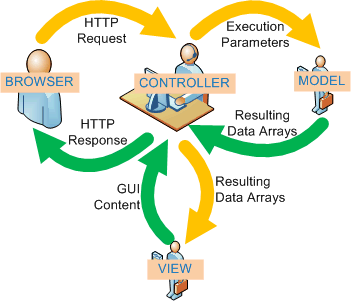Model–view–controller
(MVC) is a software architectural pattern for implementing user
interfaces. It divides a given software application into three
interconnected parts, so as to separate internal representations of information
from the ways that information is presented to or accepted from the user. The
central component, the model, consists of application data, business rules,
logic and functions. A view can be any output representation of information,
such as a chart or a diagram. Multiple views of the same information are
possible, such as a bar chart for management and a tabular view for
accountants. The third part, the controller, accepts input and converts it to
commands for the model or view.
From
Wikipedia, the free encyclopedia
Learn MVC
Online
Learn ASP.NET
MVC Online
ASP.Net
Resources




